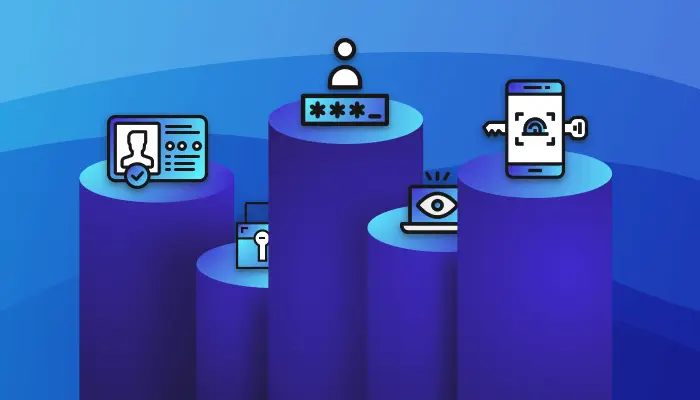Key Takeaways
- Identity and Access Management (IAM) is pivotal for modern digital security.
- It is understanding the core components: Identification, Authentication, Authorization, and Accountability.
- Best practices include robust authentication protocols and regular policy updates.
- Automation and AI are revolutionizing the IAM landscape.
Table of Contents
- Introduction to Identity and Access Management (IAM)
- The Core Components of IAM
- The Evolution of IAM Solutions
- IAM and User Experience: Striking the Balance
- The Role of IAM in Compliance and Regulation
- Automation and Artificial Intelligence in IAM
- A Peek into the Future of IAM
- Conclusion: The Critical Role of IAM in Cybersecurity
Introduction to Identity and Access Management (IAM)
With increasing online data breaches and cyber-attacks, the significance of robust identity and access management (IAM) systems is at its peak. IAM is a foundational element of cybersecurity, ensuring that only authorized individuals can access technology resources. It is the cornerstone for maintaining systems and data integrity, confidentiality, and availability. Adopting IAM strategies becomes essential to thwart identity theft, prevent unauthorized access, and provide a secure and resilient environment for online resources.
The Evolution of IAM Solutions
Identity and access management solutions have transformed from simplistic password protection to complex, layered security measures. This evolution reflects the growing sophistication of cyber threats and the diverse ways users access systems. The traditional perimeter-based approach to security is giving way to a more nuanced, user-centric methodology that accounts for the myriad ways digital resources are consumed.
As we interconnect our digital footprints, safeguarding our virtual identities becomes paramount. Securing digital identities means employing advanced encryption, rigid authentication methods, and ongoing surveillance for abnormalities indicative of breaches or fraud. These practices are continuously updated to stay ahead of malicious actors.
The Core Components of IAM
The effective management of digital identities encompasses several essential components. Identification involves a user claiming an identity (e.g., username), while Authentication follows by verifying this claim, often through passwords, biometric data, or multi-factor methods. Authorization then accurately ensures the authenticated individual can access the system’s resources. Lastly, Accountability is ensured by creating an audit trail of all transactions, which provides a means to track user actions and detect any malicious activity within the system. Collectively, these pillars are integral to protecting against unauthorized access and ensuring that users are who they claim to be.
IAM and User Experience: Striking the Balance
While security is a paramount priority, the impact on user experience must be considered. Overly stringent measures may deter users and create inefficiencies, whereas lax security can lead to breaches and data loss. It is, therefore, vital to achieve a balance that protects assets while facilitating ease of access. Solutions like risk-based Authentication, where the system calculates the risk score of a login attempt, and SSO, where users can access multiple applications with one set of login credentials, help maintain this balance between security and convenience.
The Role of IAM in Compliance and Regulation
With rising awareness and expectations for privacy and data security, governments worldwide have implemented stringent regulations such as the General Data Protection Regulation (GDPR) and the Health Insurance Portability and Accountability Act (HIPAA). IAM plays a strategic role in aiding organizations to meet these compliances. Through detailed logs, robust enforcement of access controls, and periodic reviews of user activities, IAM ensures that businesses can demonstrate compliance with applicable laws and standards.
Automation and Artificial Intelligence in IAM
Integrating automation and artificial intelligence into IAM systems represents a significant leap forward in cybersecurity. These technologies can quickly identify and react to potential threats, reducing the time to detection and response. Automation streamlines management processes, while AI can analyze patterns and predict potential breaches before they occur. This proactive and predictive approach marks a shift from reactive security to one that is anticipative, making IAM solutions more efficient and intelligent.
A Peek into the Future of IAM
Looking ahead, the future of IAM pulses with potential. We will likely use decentralized identity models empowered by blockchain technology, offering users a new level of security and control over their digital identities. Biometrics will continue to advance, providing more seamless and secure authentication methods. Moreover, as our world becomes increasingly interconnected through the Internet of Things (IoT), new and sophisticated IAM solutions will be required to secure many devices and data points.
Conclusion: The Critical Role of IAM in Cybersecurity
As an integral component of cybersecurity, IAM must be considered. In our interconnected digital era, securing identities is as crucial as protecting the data. By continuing to innovate and adapt IAM strategies in line with technological advancements and emerging threats, organizations will fortify their defenses against cybercriminals and ensure the integrity of their digital interactions. Vigilance and proactive measures are essential, for it is through sophisticated IAM practices that the digital identities of tomorrow will be secured.
